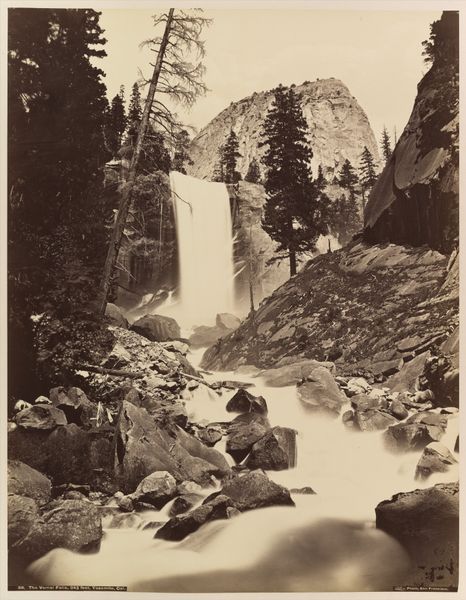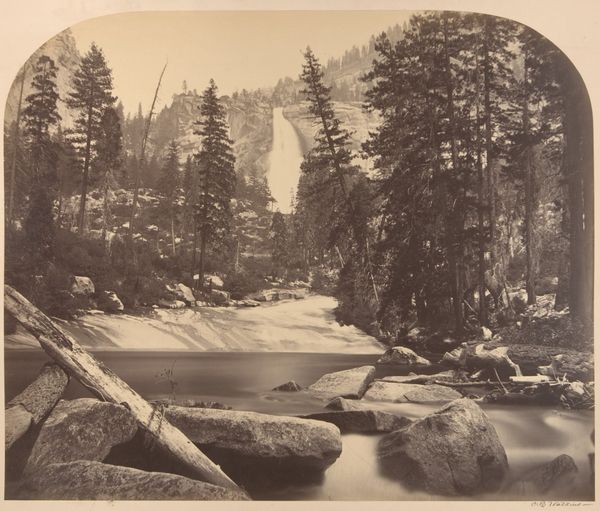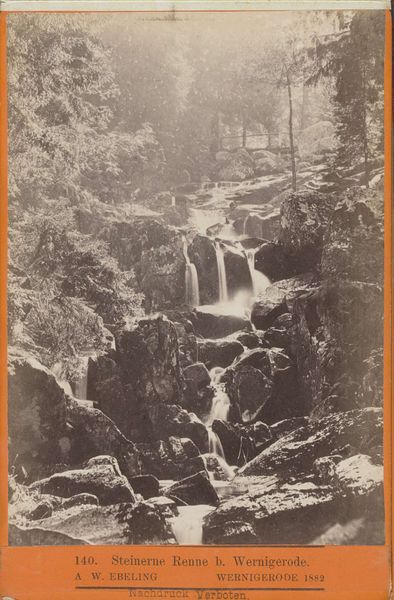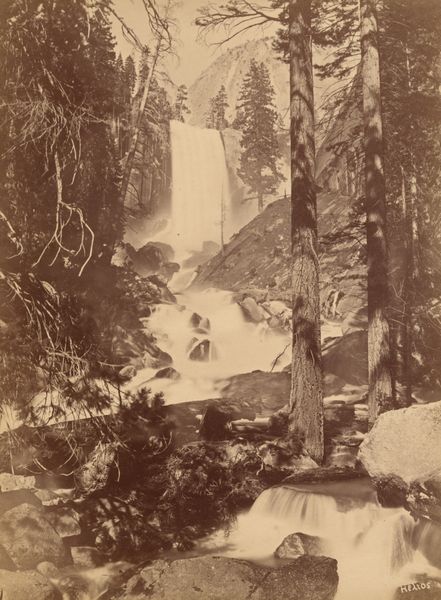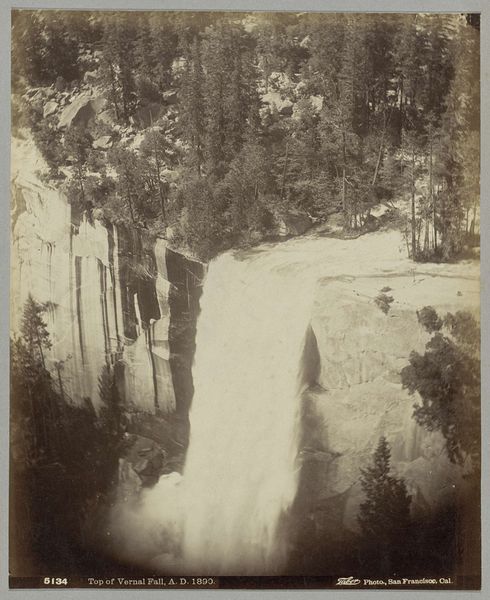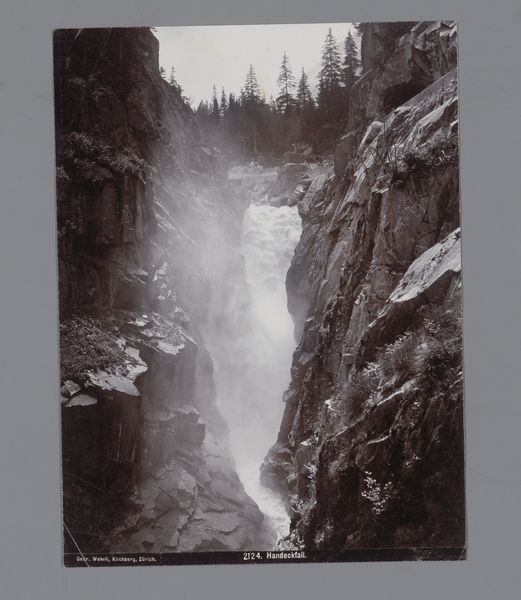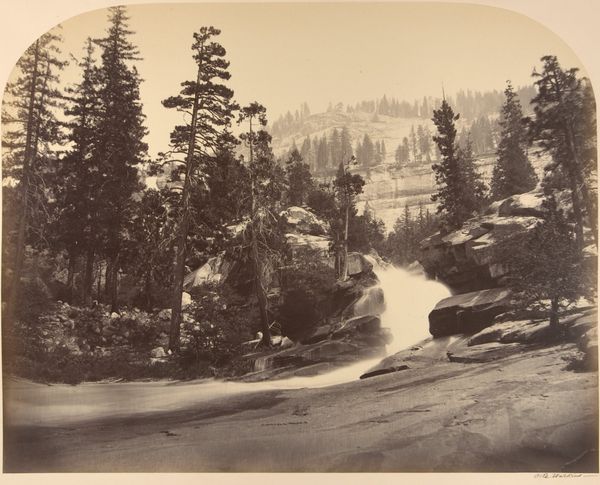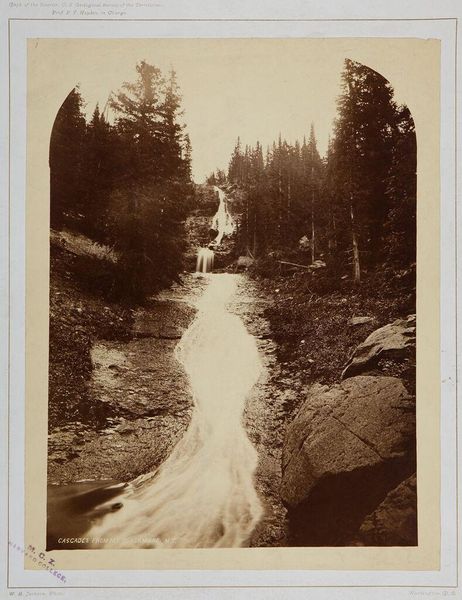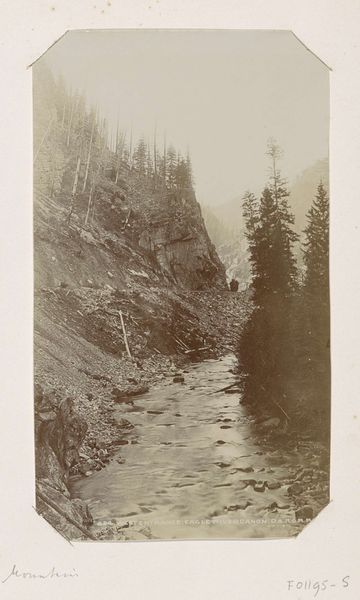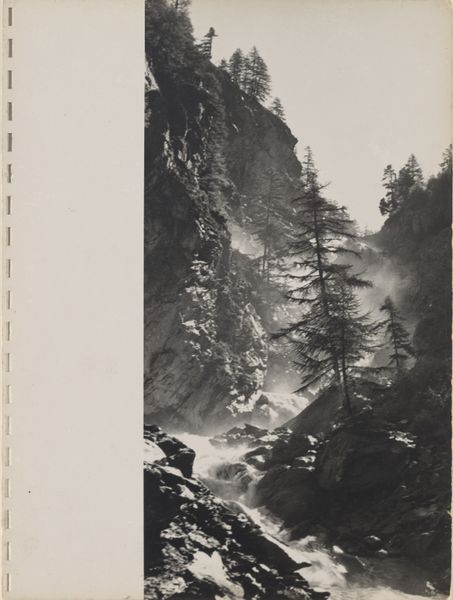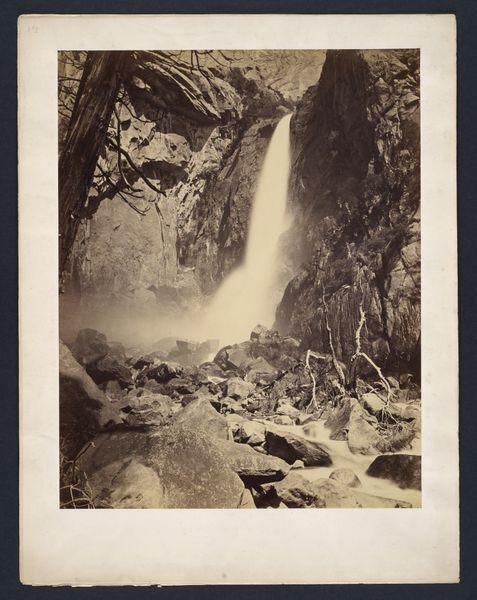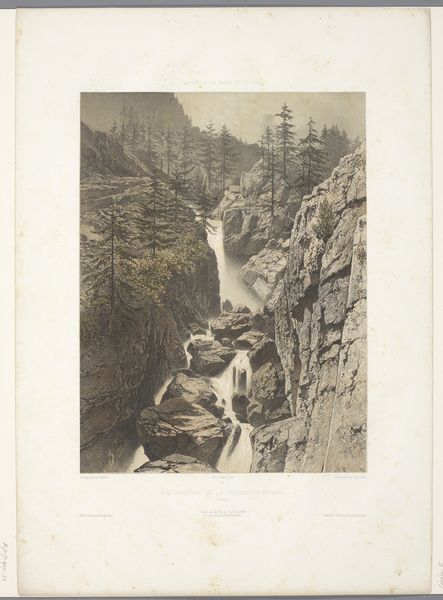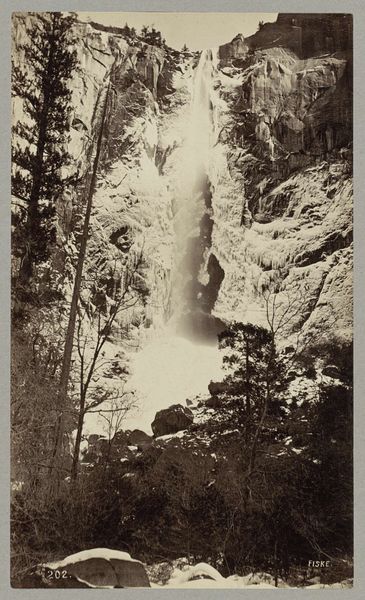
Dimensions: height 106 mm, width 66 mm
Copyright: Rijks Museum: Open Domain
Curator: This gelatin silver print, "Waterval de Steinerne Renne in Wernigerode, Duitsland," created sometime between 1860 and 1875, is a gorgeous landscape by E. Rose. Editor: The stillness captured in this cascade of water feels like a paradox, a tension caught in a single frame. There's something really haunting and ethereal about it. Curator: This piece emerges in an interesting period for landscape photography. Early photographic practices met the rising interest in Romantic ideals, especially an emphasis on nature and wilderness. It’s intriguing to observe how these values were interpreted through photographic lenses, considering that it was such a new technology at the time. Editor: Exactly! We can't detach this image from those specific social and aesthetic contexts. The idea of sublime nature, of confronting it and understanding its impact, were all ideas tied to the 19th-century colonial mindset. As such, what did capturing these wildernesses represent at that point? Who had access to such scenery? What kinds of journeys or pilgrimages were popularized or enabled by photos like this one? Curator: Good points. And thinking about this piece's placement within popular 19th-century photographic imagery is a key analytical point. At the time, photographers and publishing houses increasingly created these smaller format cards of different scenes, making them widely available as commercial keepsakes for sentimental middle-class collecting habits, and allowing scenes to become normalized, consumed, and disseminated for a larger viewing audience. Editor: And those consumption habits weren't as innocent as they might seem to us now. With images like these, circulation also implies certain modes of viewing or even commodifying an idea or space, as well as an attempt to tame something so wild... I can see all of those tensions playing out here, as it invites an interpretation as part of those ongoing power dynamics and the cultural politics of visuality. Curator: Yes, analyzing art's power in these socio-political contexts shows us its ongoing relevance in our current moment. This type of exploration really allows us to reflect on our roles as active participants in today's visual cultures and economies, with different approaches in museums and galleries worldwide. Editor: It reminds us to examine the way we perceive, interpret, and potentially re-imagine our relationships with the world through this important, unique record of how photography once was, and how much it has come to mean today.
Comments
No comments
Be the first to comment and join the conversation on the ultimate creative platform.
